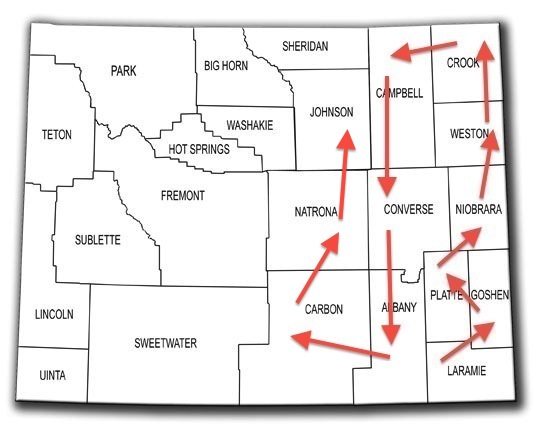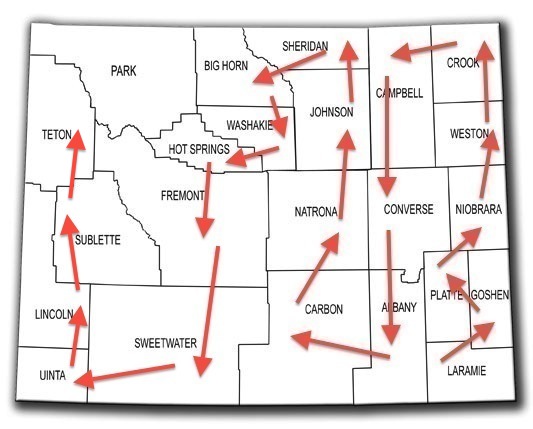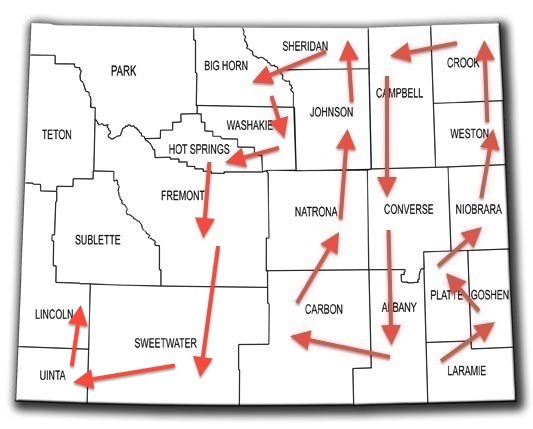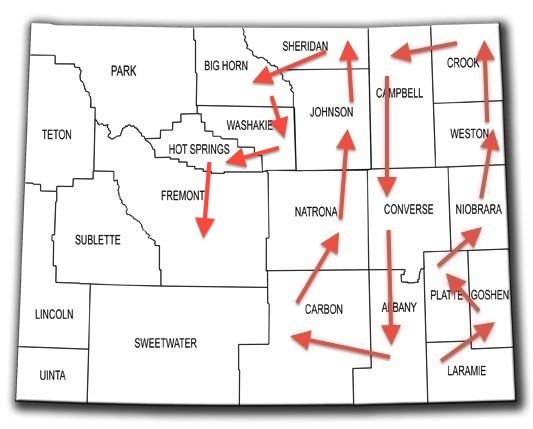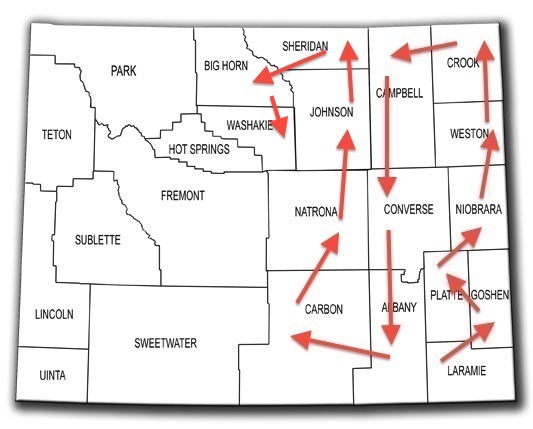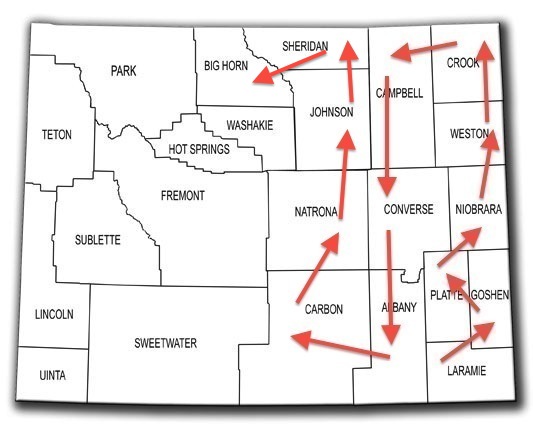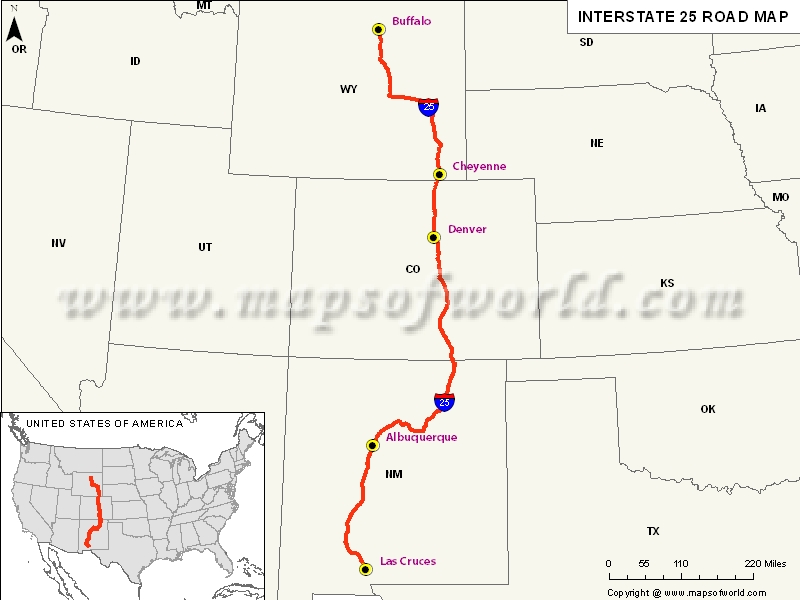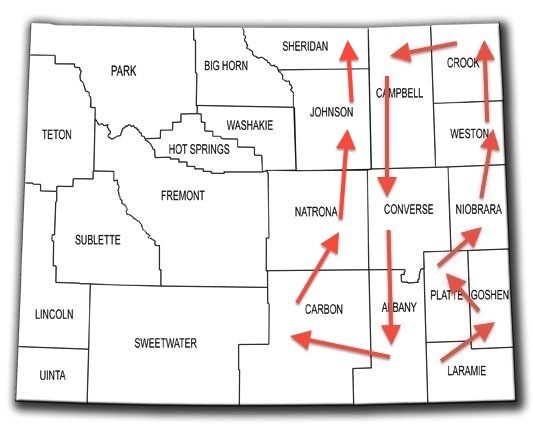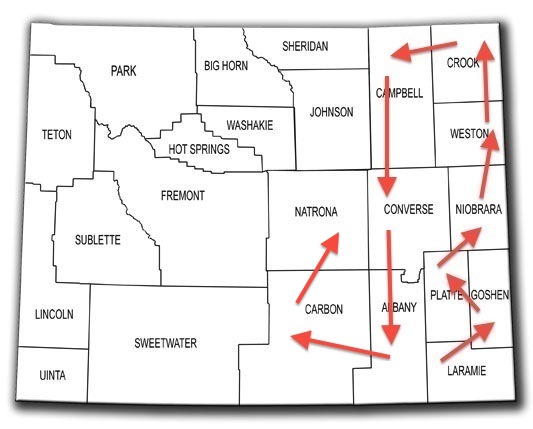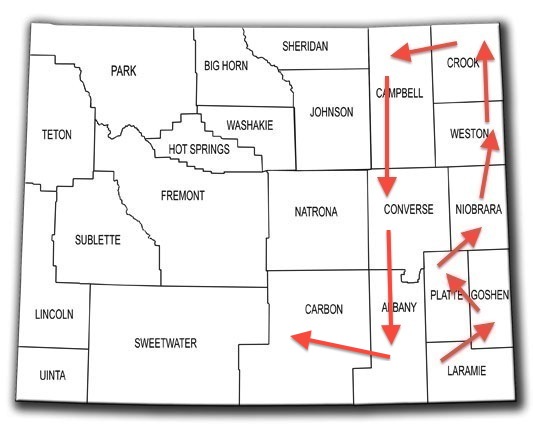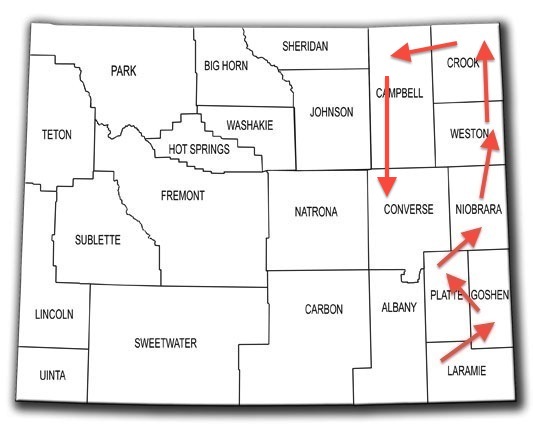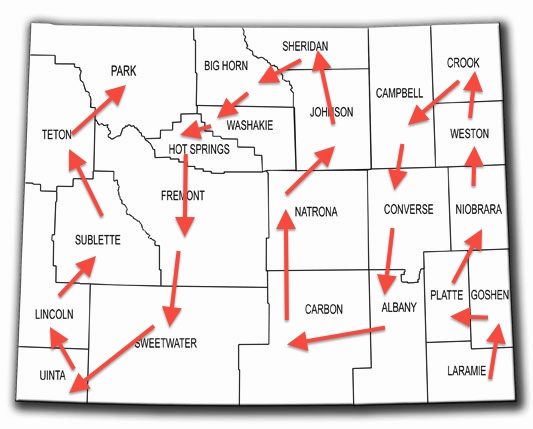Natrona County (pop. 75,450) is in the middle of Wyoming. It’s the only Natrona County in the U.S.

The county was named for its deposits of natron, a mineral salt found in the area’s dry lake beds.

Used for mummification in ancient Egypt
The county seat of Natrona County is Casper (pop. 55,316), second-largest city in Wyoming. It is on the North Platte River, at the base of Casper Mountain.

Casper and Casper Mountain (elev. 8,130)
Casper was established near the site of Fort Caspar; the fort was named for Lt. Caspar Collins, who was killed by Indian warriors in the area. The change in spelling resulted from a typographical error when the town’s name was registered.

The fort closed well before the city was founded.
Casper is known as “The Oil City.” The Salt Creek Oil Field, north of Casper, opened in 1889, and Casper’s first oil refinery was built in 1895. The city’s population has varied wildly over the years because of its dependence on the energy industry.

Downtown Casper has some stately public buildings from its early days as an oil boomtown.

The Townsend Hotel (1923) is now the Townsend Justice Center.
The Rialto Theatre (1921) is still showing first-run movies.

One large screen and a balcony
Natrona County High School was built between 1924 and 1941 in the Collegiate Gothic style.

It was originally known as Casper High School.
Rotary Park, just south of Casper, features Garden Creek Falls.

On Casper Mountain
The town of Bar Nunn (pop. 2,213) is just north of Casper. A local rancher named Romie Nunn developed the land in the 1950s as the Bar Nunn Ranch Subdivision.

The land was formerly Casper’s airport.
In the western part of Natrona County is Hell’s Half Acre, an area of deep ravines, caves, and rock formations.

Independence Rock, southwest of Casper, was an important landmark along the Oregon and California trails.

Many emigrants scratched their names into the surface.
Teapot Rock, north of Casper, gave its name to a nearby oil field and to the infamous Teapot Dome scandal during the administration of President Warren Harding, 1921-23.

Harding and Teapot Rock
In southwestern Natrona County near Alcova (pop. 76) is the Mormon Handcart Visitors’ Center, commemorating the deaths of pioneers on the Mormon Trail to Salt Lake City in 1856.

There are handcarts for visitors to pull.
NEXT: JOHNSON COUNTY
